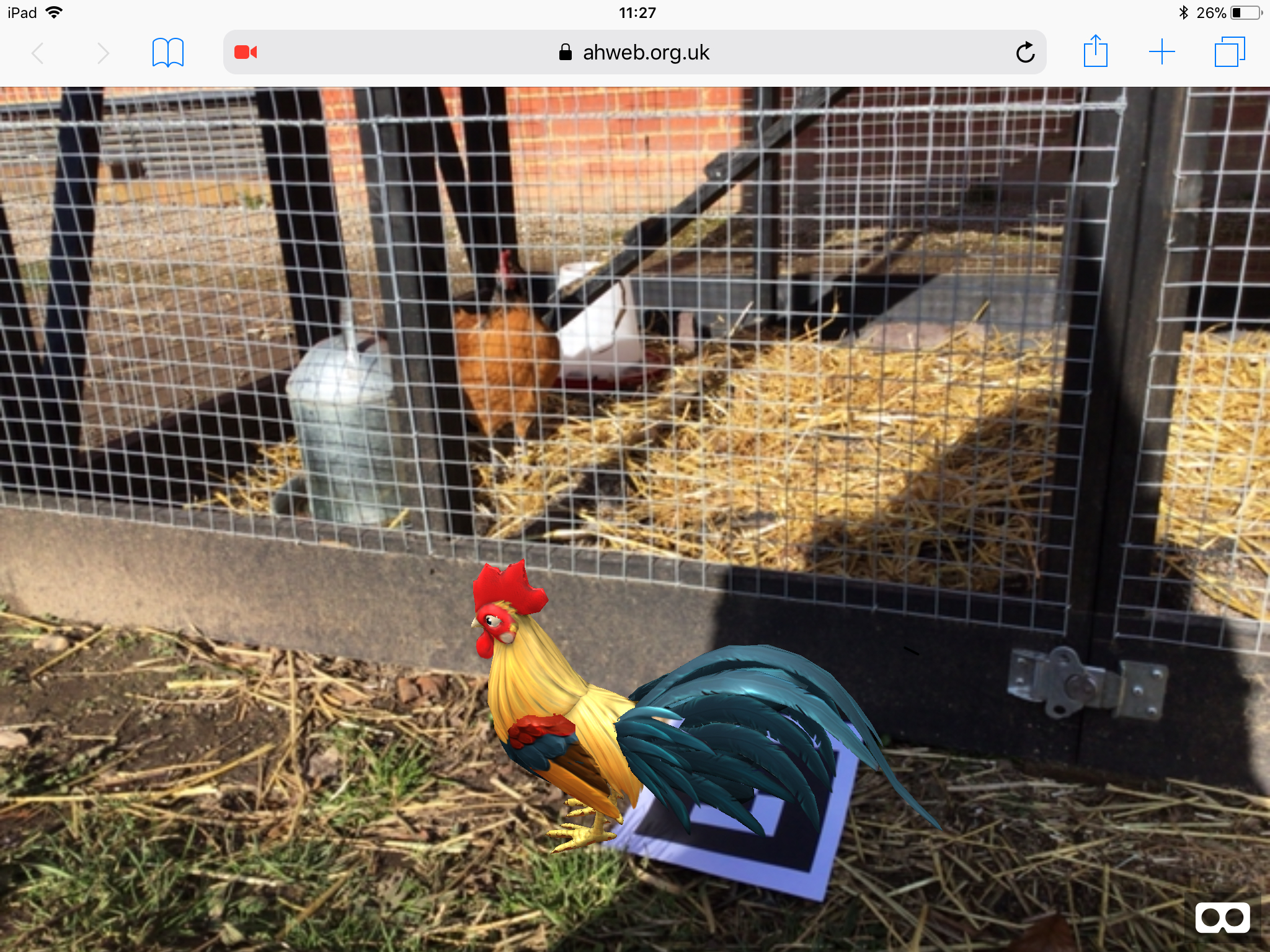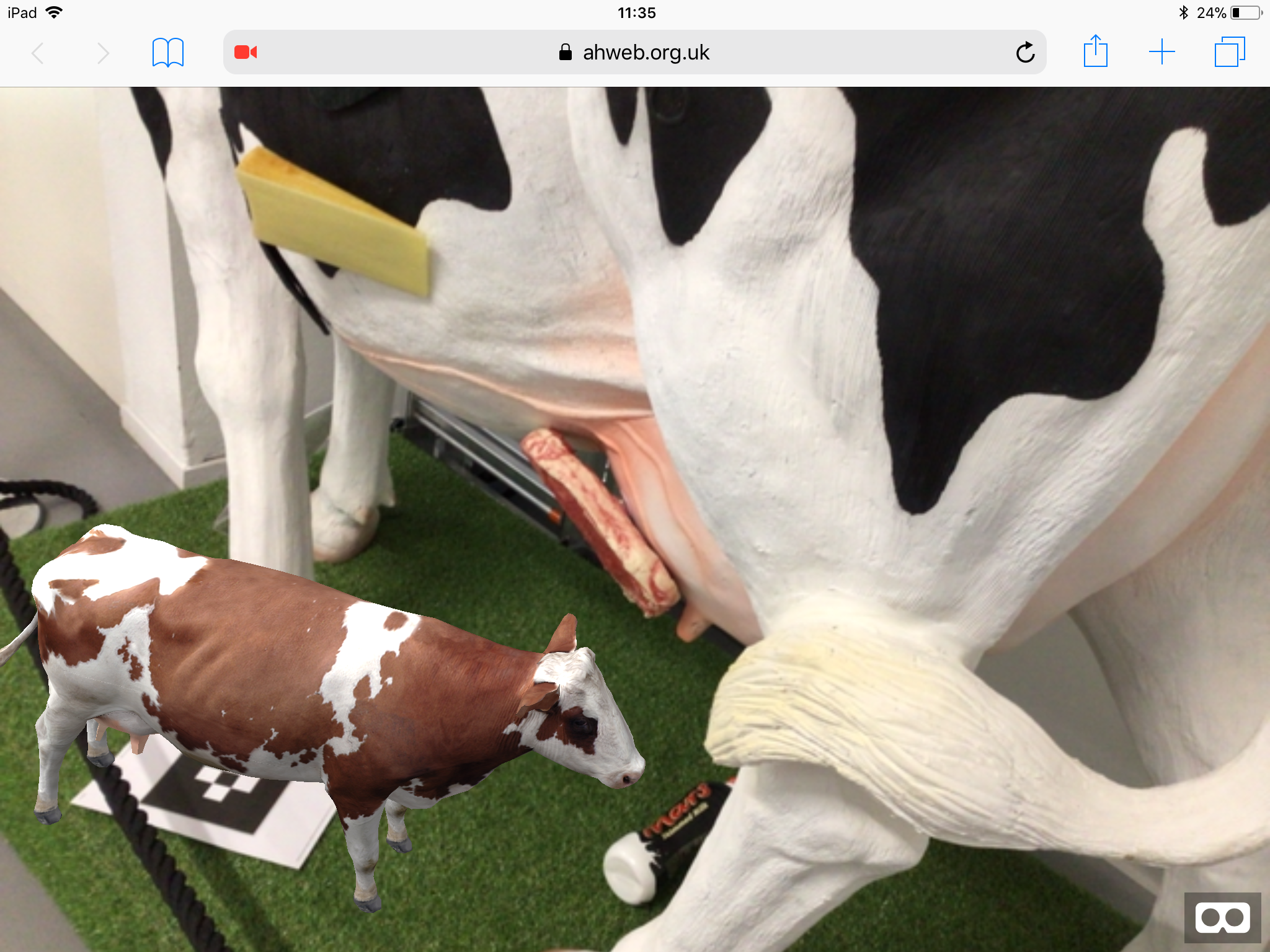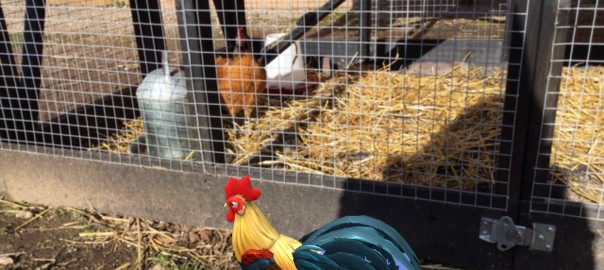Can AR help visitors’ enjoyment and learning in museums? We are just beginning to play to see whether we can create fun activities without spending a lot of money. We would like them to be usable in two ways
- on a user’s own phone/tablet
- on a tablet loaned to them by the venue without necessarily needing to be online [heritage sites are sometimes characterised by having thick walls and are wifi-challenged].
We have neither the expertise nor the desire to implement native apps, both because of the costs of maintaining apps across multiple platforms and because of visitors’ resistance to loading apps. We have also had a bad experience using someone else’s app which was removed without warning [Everytrail] so we are looking at implementing webapps. Our first experiment is with an iPad running IOS11, Jerome Etienne’s ar.js tracking suite on top of ARToolkit and a couple of models downloaded from Sketchfab. Here they are in the Museum of English Rural Life (Reading, UK).
Visiting the ladies in the chook run

Cockerel model CC attribution The Ice Wolves (https://sketchfab.com/sarath.irn)
So what is cow reality?

White-brown cow model CC attribution Josue Boisvert ‘Real’ black-white cow model by MERL.
There are some problems with using iPad.
- IOS now (version 11) does support WebRTC on Safari but putting the website from Safari to the home page does not work
- it is not supported on other browsers (e.g. Chrome)
- also does not work in the Kiosk Pro app.
- IOS does not allow audio to be played without some user interaction which means the user doesn’t hear the cock crow once he comes into view
- Safari requires the user to accept whether the camera can be used or not which adds another hurdle to ease of use
Such problems don’t exist on a 6 year old laptop running Windows 7 for example so it was disappointing to find that the iPad felt less usable.
All this may mean we have to abandon thoughts of using the iPad for anything other than visitors bringing their own and in sites with good wifi, unless we can tie things down using guided access. In other experiments, the Kiosk Pro app has enabled us to load all the code into the iPad, lock it down sufficiently so that the visitor cannot ‘break out’ into another activity, and safely allow them to use the activity without supervision/having to constantly check that nothing has stopped working. [See for example
the Ladybird book which formed part of an exhibition some years ago and needed no supervision]
We hope that Apple will lift these restrictions. We will now experiment with Android devices.
 Cockerel model CC attribution The Ice Wolves (https://sketchfab.com/sarath.irn)
So what is cow reality?
Cockerel model CC attribution The Ice Wolves (https://sketchfab.com/sarath.irn)
So what is cow reality?
 White-brown cow model CC attribution Josue Boisvert ‘Real’ black-white cow model by MERL.
There are some problems with using iPad.
White-brown cow model CC attribution Josue Boisvert ‘Real’ black-white cow model by MERL.
There are some problems with using iPad.
